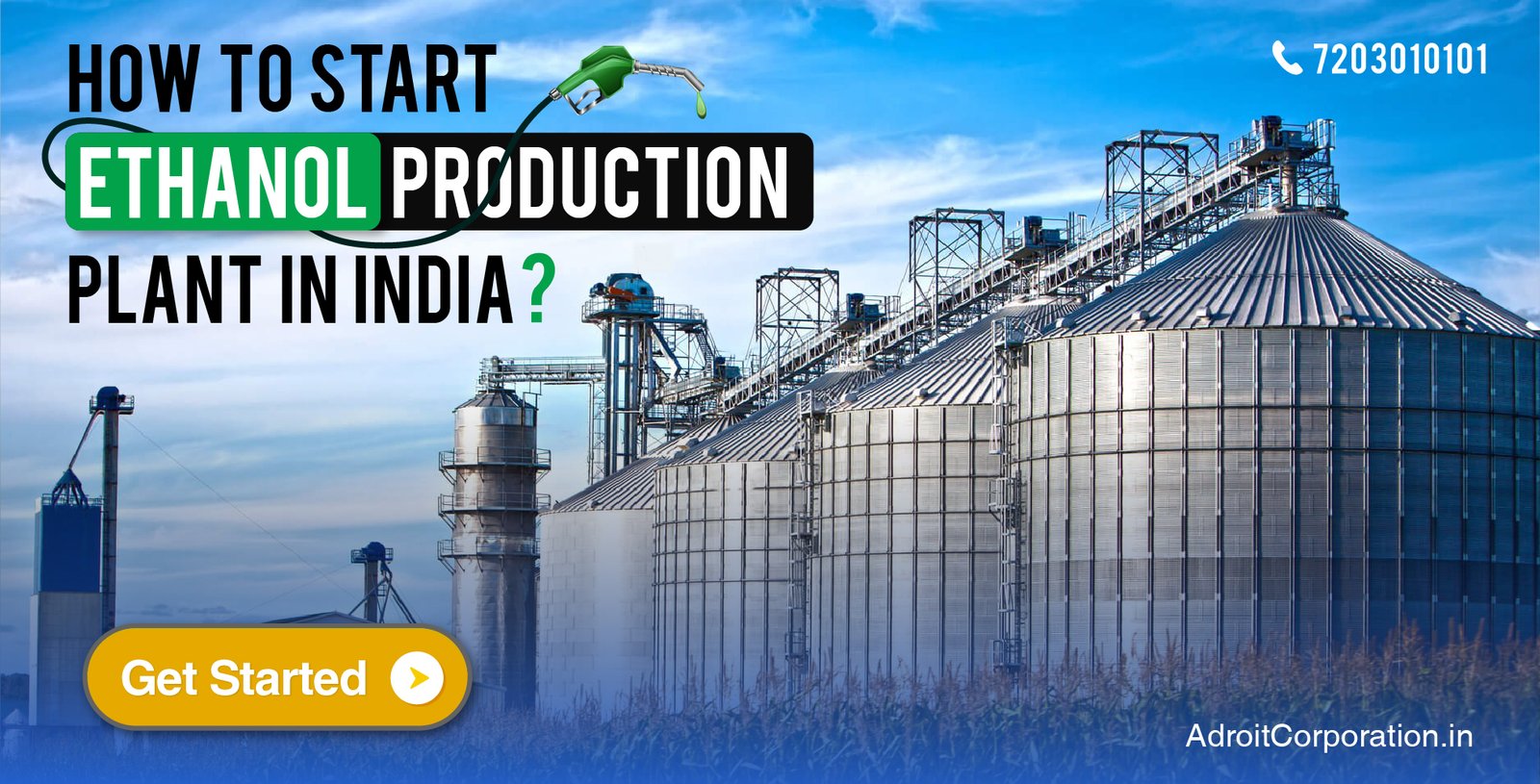Setting up an ethanol manufacturing plant requires meticulous planning, extensive market research, and careful evaluation of operational and financial aspects. Ethanol, a renewable biofuel, is primarily derived from the fermentation of sugar-based crops like corn, sugarcane, and wheat. It serves as an essential fuel additive, reducing greenhouse gas emissions and improving engine efficiency. Additionally, ethanol has applications in industries such as pharmaceuticals, cosmetics, and alcoholic beverages.
Given the increasing global demand for sustainable energy sources, establishing an ethanol manufacturing plant presents a profitable business opportunity. This guide provides a detailed overview of the steps involved, covering everything from market analysis to financial viability.
Market Analysis and Industry Trends
Before setting up an ethanol production facility, an in-depth market analysis is essential. The global ethanol industry is witnessing steady growth due to factors such as rising crude oil prices, government incentives promoting biofuel adoption, and technological advancements enhancing production efficiency.
Key Market Insights:
- Growing Demand: Countries like the U.S., Brazil, and India have implemented ethanol blending mandates to reduce carbon footprints.
- Regional Breakdown: North America, Latin America, Europe, and Asia-Pacific lead the global ethanol market.
- Feedstock Pricing Trends: Ethanol production is influenced by fluctuating prices of raw materials like corn and sugarcane.
- Emerging Technologies: Innovations like enzyme-based hydrolysis and cellulosic ethanol production are enhancing industry efficiency.
Production Process and Operational Setup
A well-structured ethanol production facility requires careful planning and adherence to industry standards. The manufacturing process involves various stages, from selecting an appropriate location to ensuring an efficient supply chain for raw materials.
Key Components of Plant Setup:
- Site Selection and Infrastructure:
- Choose a location close to raw material suppliers and transportation hubs.
- Develop necessary infrastructure, including storage facilities, pipelines, and utility provisions.
- Plant Layout and Machinery:
- Invest in advanced fermentation and distillation machinery.
- Ensure compliance with environmental and safety regulations.
- Raw Material Procurement:
- Secure a consistent supply of raw materials such as corn, sugarcane, or wheat.
- Establish contracts with reliable suppliers to mitigate price fluctuations.
- Packaging and Storage:
- Implement high-standard storage tanks to maintain ethanol purity.
- Ensure safe and efficient transportation and packaging methods.
- Quality Control and Safety Measures:
- Conduct routine quality inspections to maintain product standards.
- Implement fire safety measures and hazardous material handling protocols.
- Workforce Planning and Training:
- Hire skilled personnel for process management, equipment maintenance, and quality control.
- Conduct regular training sessions on operational efficiency and safety measures.
Financial Considerations and Investment Planning

Setting up an ethanol manufacturing unit involves a substantial investment. A comprehensive financial plan ensures cost efficiency and profitability.
Key Financial Aspects:
- Capital Expenditure (CAPEX):
- Costs include land acquisition, infrastructure development, machinery procurement, and installation.
- Operating Expenditure (OPEX):
- Recurring expenses include raw material costs, labor wages, utility bills, transportation, and maintenance.
- Revenue Projections:
- Expected income is determined by production capacity, market demand, and pricing strategies.
- Profitability Analysis:
- Calculate net present value (NPV), internal rate of return (IRR), and payback period to assess business feasibility.
- Taxation and Depreciation:
- Consider tax incentives, subsidies, and depreciation rates for machinery and infrastructure.
- Risk and Sensitivity Analysis:
- Evaluate potential risks such as raw material price volatility, regulatory changes, and economic downturns.
Legal and Regulatory Compliance
Establishing an ethanol production facility requires obtaining various licenses and adhering to environmental regulations. Compliance with local and international standards ensures smooth operations and legal protection.
Mandatory Legal Requirements:
- Licenses and Permits: Obtain necessary approvals from environmental and industrial authorities.
- Environmental Compliance: Follow waste disposal guidelines and emission control regulations.
- Certifications: Ensure product certification for market distribution and export eligibility.
- Safety and Labor Laws: Adhere to workplace safety standards and labor rights regulations.
Marketing and Distribution Strategy
A well-defined marketing and distribution strategy helps maximize business reach and profitability. Ethanol producers can target multiple sectors, including fuel distributors, pharmaceutical companies, and beverage manufacturers.
Key Marketing Approaches:
- Industry Partnerships: Collaborate with fuel suppliers, automotive companies, and industrial buyers.
- Digital Marketing: Utilize online platforms to increase brand visibility and attract customers.
- Government Contracts: Leverage government initiatives promoting ethanol usage.
- Export Potential: Explore international markets with high ethanol demand.
Future Prospects and Technological Advancements

The ethanol industry is undergoing rapid transformation, driven by technological innovations and sustainability initiatives. Emerging trends such as ethanol-to-jet (ETJ) fuel production and second-generation biofuels are opening new growth opportunities.
Upcoming Industry Trends:
- Sustainable Aviation Fuel (SAF): Ethanol-derived jet fuel is gaining traction in the aviation sector.
- Advanced Fermentation Techniques: Innovations in enzymatic hydrolysis and microbial fermentation are improving yield efficiency.
- Integration with Renewable Energy: Ethanol plants are increasingly adopting solar and wind energy solutions to reduce operational costs.
Conclusion: A Profitable and Sustainable Business Opportunity
Setting up an ethanol manufacturing plant presents a lucrative investment opportunity, driven by increasing global demand for clean energy alternatives. A well-structured business plan covering market analysis, financial viability, operational efficiency, and regulatory compliance is crucial for success.
Investing in advanced technologies, securing a consistent supply chain, and implementing effective marketing strategies will ensure long-term profitability and sustainability in this ever-evolving industry. With the right approach, entrepreneurs can establish a thriving ethanol production business that contributes to a greener and more sustainable future.
For detailed financial modeling and feasibility analysis, consulting with industry experts or market research firms can provide valuable insights and strategic guidance for a successful ethanol manufacturing venture.




